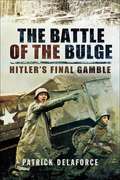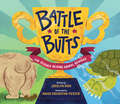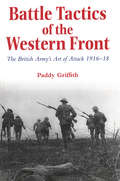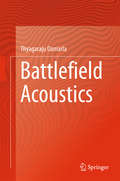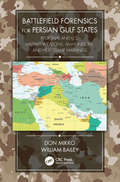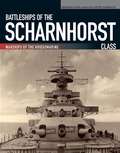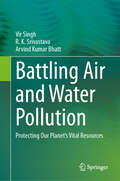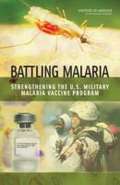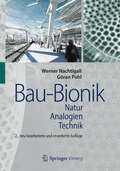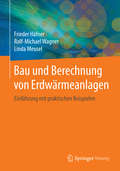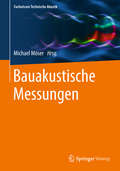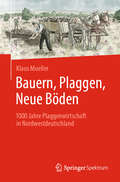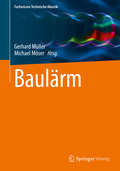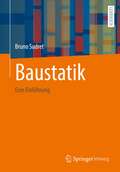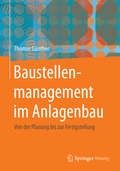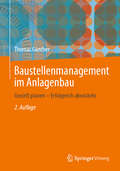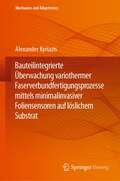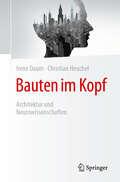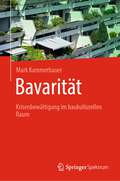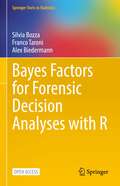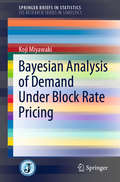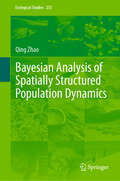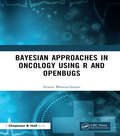- Table View
- List View
The Battle of the Bulge: Hitler's Final Gamble
by Patrick DelaforceBy late 1944 the Allies were poised to smash the Siegfried Line and break into Germany. Supply lines were shorter thanks to the port of Antwerp. Arnhem aside, there had been a long run of victories and there was no intelligence even from ULTRA to suggest a German counter-offensive.So the major December attack through the mountainous Ardennes by massed Panzers and infantry took the Allies totally by surprise. Fog and low cloud negated the Allies' air supremacy, English-speaking German commandos in captured jeeps created panic and withdrawal of US forces became a near rout with morale all but broken.For ten days the situation worsened and Antwerp was seriously threatened and 21st Army Group in danger of being cut off.Clear skies for the Thunderbolts and coherent counter-attacks by rapidly deployed reinforcements turned the tide in the nick of time, so preventing a catastrophic defeat for the Allies.All this and more is graphically narrated in this fine study of a pivotal battle, that so nearly changed the course of war.
Battle of the Butts: The Science Behind Animal Behinds
by Jocelyn RishDid you know manatees swim using farts? Or that herrings communicate by passing gas?Butts are used for breathing, eating, swimming, talking, and even killing in the animal kingdom. Focusing on ten different animals and their derrières, and offering fun facts about their origin, habitat, and "posterior power," this hilarious book captures the wonder of our ecosystem. Which animal has the coolest butt power? That's up to you to decide!
Battle Tactics of the Western Front
by Paddy GriffithHistorians have portrayed British participation in World War I as a series of tragic debacles, with lines of men mown down by machine guns, with untried new military technology, and incompetent generals who threw their troops into improvised and unsuccessful attacks. In this book a renowned military historian studies the evolution of British infantry tactics during the war and challenges this interpretation, showing that while the British army's plans and technologies failed persistently during the improvised first half of the war, the army gradually improved its technique, technology, and, eventually, its' self-assurance. By the time of its successful sustained offensive in the fall of 1918, says Paddy Griffith, the British army was demonstrating a battlefield skill and mobility that would rarely be surpassed even during World War II.Evaluating the great gap that exists between theory and practice, between textbook and bullet-swept mudfield, Griffith argues that many battles were carefully planned to exploit advanced tactics and to avoid casualties, but that breakthrough was simply impossible under the conditions of the time. According to Griffith, the British were already masters of "storm troop tactics" by the end of 1916, and in several important respects were further ahead than the Germans would be even in 1918. In fields such as the timing and orchestration of all-arms assaults, predicted artillery fire, "Commando-style" trench raiding, the use of light machine guns, or the barrage fire of heavy machine guns, the British led the world. Although British generals were not military geniuses, says Griffith, they should at least be credited for effectively inventing much of the twentieth-century's art of war.
Battlefield Acoustics
by Thyagaraju DamarlaThis book presents all aspects of situational awareness using acoustic signals. It starts by presenting the science behind understanding and interpretation of sound signals. The book then goes on to provide various signal processing techniques used in acoustics to find the direction of sound source, localize gunfire, track vehicles and detect people. The necessary mathematical background and various classification and fusion techniques are presented. The book contains majority of the things one would need to process acoustic signals for all aspects of situational awareness in one location. The book also presents array theory, which is pivotal in finding the direction of arrival of acoustic signals. In addition, the book presents techniques to fuse the information from multiple homogeneous/heterogeneous sensors for better detection. MATLAB code is provided for majority of the real application, which is a valuable resource in not only understanding the theory but readers can also use the code as a spring-board to develop their own application based software code.
Battlefield Forensics for Persian Gulf States: Regional and U.S. Military Weapons, Ammunition, and Headstamp Markings
by Don Mikko William BaileyBattlefield Forensics for Persian Gulf States provides an illustrative reference of various weapons, toolmarks, headstamps, and other traits in order to identify the origins of a variety of guns, casings, and ammunition that can be found in the Middle East. Various conflicts in the region have led to innumerable weapons being used throughout the years. The lead author, Don Mikko, has investigated and examined firearms related items of evidence in countless crime scenes throughout the world. As the Chief of the Firearms Branch at the United States Army Criminal Investigation Laboratory (USACIL), Fort Gillem, Georgia, he recruited, trained, and competency tested military contractors deploying to various combat related areas of the world, those providing forensic firearm and toolmark identification support to local commanders. What was learned was that various foreign weapons and ammunition were being utilized in conflicts and by opposing forces. This book educates readers on the technical data for different types of firearms, ammunition, countries of origin, proof marks, penetrator information and the typical firearm markings imparted on fired cartridge cases, such as breech-face, firing pin, ejector, and extractor markings. Forensics and biometrics within the Persian Gulf have been leveraged since the early 1990s and many of the firearms and types of ammunition covered in this handbook are addressed in an effort to assist those on the ground who are required to be able to identify such items in various scenarios. The information contained within the book has proven to be effective on the battlefield and has helped shape combat operations. This handbook will serve as a useful reference not only to assist military and contractor personnel within the various combat locations but will also prove to be beneficial for law-enforcement, crime laboratory personnel, forensic firearm and toolmark examiners, crime scene investigators, students, practitioners, and civilian personnel throughout the world.
Battleships of the Scharnhorst Class: The Scharnhorst and Gneisenau: The Backbone of the German Surface Forces at the Outbreak of War (Warships Of The Kriegsmarine Ser.)
by Gerhard Koop Klaus-Peter SchmolkeIn this WWII naval history, an expert in German warship design examines the legendary battlecruisers Scharnhorst and Gneisenau. This concise yet authoritative summary of Scharnhorst class vessels covers the design history and careers of these WWII-era warships. Much like its companion volume, Battleships of the Bismark Class, it offers a detailed description of both ships with full technical details. The author also provides an outline of their combat service, heavily illustrated with plans, battle maps, and a substantial collection of photographs. The Scharnhorst and Gneisenau were the product of a long and complicated design process. Combining speed and power, these two battleships took part in a number of major operations, including the infamous &‘Channel Dash&’.
Battling Air and Water Pollution: Protecting Our Planet's Vital Resources
by Vir Singh R. K. Srivastava Arvind Kumar BhattThis book discusses growing environmental threats posed by air and water pollution, exploring their causes, impacts, and potential solutions. It covers a range of pollutants, from solid and liquid to gaseous and energy-based, while offering a clear analysis of their origins and effects. The chapters examine the global impact of pollution, highlighting the interconnectedness of air and water pollution and their combined effects on ecosystems and human health. It also discusses economic, social, and health-related costs along with practical solutions for pollution management. This book serves as a valuable resource for environmentalists, policymakers, graduate and postgraduate students, as well as anyone looking to deepen their understanding of environmental challenges.
Battling Malaria: Strengthening The U.s. Military Malaria Vaccine Program
by Institute of Medicine of the National AcademiesThe National Academies Press (NAP)--publisher for the National Academies--publishes more than 200 books a year offering the most authoritative views, definitive information, and groundbreaking recommendations on a wide range of topics in science, engineering, and health. Our books are unique in that they are authored by the nation's leading experts in every scientific field.
Bau-Bionik: Natur - Analogien - Technik
by Göran Pohl Werner NachtigallBionik befasst sich mit der technischen Umsetzung und Anwendung von Konstruktionen, Verfahren und Entwicklungsprinzipien biologischer Systeme. Beispiele aus der Natur liefern Anregungen zur Entwicklung neuer L#65533;sungen, wie etwa bei thermischen L#65533;ftungssystemen, die sich am Beispiel von Termitenbauten orientieren. Der Band bietet Lesern Gelegenheit, Grundideen der Natur kreativ f#65533;r eigene L#65533;sungen zu nutzen. Daf#65533;r erl#65533;utern die Autoren zahlreiche Beispiele und deren Wirkprinzipien.
Bau und Berechnung von Erdwärmeanlagen: Einführung mit praktischen Beispielen
by Frieder Häfner Rolf-Michael Wagner Linda MeuselDas Buch charakterisiert die Erdw#65533;rmenutzung, beschreibt die #65533;blichen technischen Anlagen dazu, mit Schwerpunkt auf Erdw#65533;rmesonden (EWS) und ihre Einsatzm#65533;glichkeiten. Danach wird die Berechnung von Erdw#65533;rmeanlagen (Einzel-EWS, Sondenfelder) mit mathematisch-analytischen Verfahren und numerischen Simulationsverfahren dargestellt. Die dazu notwendige Software wird Online als Demo-Version bereitgestellt. In einem weiteren Hauptkapitel werden der Bau von Erdw#65533;rmeanlagen, technische Vorausetzungen,Anforderungen und Genehmigungspraxis dargestellt. Der Betrieb der Anlagen und die vielf#65533;ltigen Nutzungsm#65533;glichkeiten f#65533;r Heizen, Warmwasserbereitung, K#65533;hlen ist in den Hauptkapiteln integriert. Beispielhafte Anlagenmuster werden dimensioniert, bautechnisch beschrieben und wirtschaftlich bewertet. Unter den regenerativen Energiequellen f#65533;r die Geb#65533;udeheizung und -klimatisierung nimmt die Erdw#65533;rme (in Form von Erdw#65533;rmesonden etc. mit W#65533;rmepumpen) den ersten Platz ein. Der j#65533;hrliche Zubau von Erdw#65533;rmeanlagen hat steigende Tendenz.
Bauakustische Messungen (Fachwissen Technische Akustik)
by Michael MöserDieser Band der Reihe Fachwissen Technische Akustik behandelt die in der Bauakustik meistverbreiteten Messmethoden, vom theoretischen Hintergrund über anwendungspraktische Fragestellungen bis hin zu den nationalen und internationalen Normen. Die Normenreihe der DIN EN ISO 12354 dient dabei als roter Faden, da sie die messbaren Größen der Bauakustik in einen Gesamtzusammenhang bringt. Ausgehend von den Aufgabenstellungen der bauakustischen Messtechnik werden die in Frage kommenden Kenngrößen erläutert. Ein wesentlicher Aspekt ist der Zusammenhang zu den bestehenden nationalen und internationalen Normen. Schwerpunktmäßig werden die Grundprinzipien der Luft- und Trittschalldämmung behandelt. Beschrieben werden Messverfahren, die im Labor und in Gebäuden zum Einsatz kommen. Dabei wird ausführlich auf die Schalldämmung als Bauteil- bzw. Systemeigenschaft eingegangen. Die aus den physikalischen Grundlagen ableitbaren Voraussetzungen der Messverfahren wie z.B. die Anforderungen an die Schallfelder und die daraus ableitbaren Festlegungen der Messverfahren (z.B. Position und Anzahl von Lautsprechern und Mikrofonen) werden eingehend diskutiert. Auf praktische Fragestellungen wie die Notwendigkeit der Fremdgeräuschkorrektur oder den Einfluss der Körperschallnachhallzeiten auf die Messergebnisse wird bei den jeweiligen Messverfahren ebenfalls Bezug genommen. Ein ausführliches Literatur- und Normenverzeichnis ergänzt die behandelten Themen, so dass eine weiterführende Vertiefung ermöglicht wird.
Bauern, Plaggen, Neue Böden: 1000 Jahre Plaggenwirtschaft in Nordwestdeutschland
by Klaus MuellerDie Plaggenwirtschaft war eine über 1000 Jahre praktizierte Form der Landwirtschaft, die den gesamten nordwestdeutschen Raum in einzigartiger Weise geprägt hat. Zeugnisse dieser Landnutzung wie fruchtbare Böden, Eschkanten und ausgedehnte Heidegebiete, lassen sich bis heute in der Landschaft finden. Neben der landwirtschaftlichen Entwicklung, Bodennutzung und typischen Landschaftsformen beeinflusste sie auch ganz wesentlich das Fühlen, Denken, Handeln und Zusammenleben der Menschen dieser Zeit. Aber wer weiß heute noch etwas darüber? Das Buch gibt hierauf spannende und interessante Antworten. Vorgelegt wird eine erste allgemein verständliche Übersicht zu allen Aspekten der Plaggenwirtschaft in Nordwestdeutschland. Angesprochen werden nicht nur Landwirte, Bodenkundler, Geographen und Archäologen, sondern vor allem auch Leser, die Interesse an der bäuerlich geprägten Vergangenheit der Menschen und deren sozio-kulturelle Prägung in Niedersachsen, Nordrhein-Westfalen, Schleswig-Holstein und Teilen Mecklenburgs haben.
Baulärm (Fachwissen Technische Akustik)
by Michael Möser Gerhard MüllerDieser Band der Reihe Fachwissen Technische Akustik handelt hauptsächlich von Baumaschinen und deren Einsatz auf Baustellen. Dabei werden vor Allem die relevanten rechtlichen Rahmenbedingungen im Zusammenhang mit Baulärm in Deutschland dargestellt. Darüber hinaus werden Steuerungsmaßnahmen sowohl aus Deutschland als auch aus anderen Staaten im Vergleich gezeigt. Dieser Beitrag ist an Entwickler von Baumaschinen, Bauplaner, Verwaltungsbehörden, Bauingenieure, Bauherren, durch Baulärm Belästigte und Bauunternehmer gerichtet.
Baustatik: Eine Einführung
by Bruno SudretDieses Lehrbuch bietet eine Einführung in die Strukturmechanik, die sich an Studenten des Bauingenieurwesens und des Maschinenbaus richtet. Er behandelt sowohl statisch bestimmte als auch unbestimmte Strukturen (Balken, Fachwerke, Bögen und Seile) und beinhaltet eine umfassende Darstellung der Kontinuumsmechanik und Elastizitätstheorie, auf der die Balkentheorien von Euler-Bernoulli und Timoshenko rigoros aufgebaut werden können. Ein Schwerpunkt liegt auch auf der Anwendung von Energiesätzen für strukturelle Systeme. Im Unterschied zu den meisten verfügbaren Lehrbüchern, die die Analyse von Strukturen als einen Katalog von Methoden darstellen, die speziell auf die eine oder andere Art von Struktur anwendbar sind, legt dieses Buch den Schwerpunkt auf Methoden der Strukturanalyse, mit einer klaren Verbindung zur Kontinuumsmechanik.
Baustellenmanagement im Anlagenbau: Von der Planung bis zur Fertigstellung
by Thomas GüntherDieses Buch beschreibt den kompletten Prozess zur Errichtung einer Anlage im internationalen Umfeld. Der Autor vermittelt auf leicht verst#65533;ndlich Art und Weise die Grundlagen f#65533;r Bau und Montage, das Zusammenspiel der Planung und Steuerung bis zur Fertigstellung einer verfahrenstechnischer Anlagen. Die detaillierte Montageplanung sowie die vereinfachte Darstellung der Zusammenh#65533;nge der Planung und Steuerung machen das Werk zu einem wertvollen Begleiter f#65533;r Berufseinsteiger und Fachbauleiter. Baustellenleiter werden besonders die interkulturelle Herangehensweise an das Thema sch#65533;tzen.
Baustellenmanagement im Anlagenbau: Gezielt planen – Erfolgreich abwickeln
by Thomas GüntherDieses Buch beschreibt umfassend und praxisorientiert die gesamte Prozesskette, von der ersten montagetechnischen Machbarkeitsuntersuchung bis zur Errichtung der Anlage aus Sicht der Bau und Montage. Der Autor vermittelt auf leicht verständlicher Art und Weise die Prinzipien der Angebotsbearbeitung und des Nachunternehmermanagements, die Grundlagen der Bau- und Montagegewerke, das Zusammenspiel der Baustellenplanung und deren Steuerung bis zur Fertigstellung der verfahrenstechnischen Anlagen. Die auf Kennzahlen fokussierte Montageplanung, sowie die vereinfachte Darstellung der Zusammenhänge zwischen Planung und Steuerung machen das Werk zu einem wertvollen Begleiter für Berufseinsteiger und Profis. Erfahrene Projektleiter und Baustellenleiter werden besonders die interkulturelle Herangehensweise an das Thema schätzen.
Bauteilintegrierte Überwachung variothermer Faserverbundfertigungsprozesse mittels minimalinvasiver Foliensensoren auf löslichem Substrat (Mechanics and Adaptronics)
by Alexander KyriazisUm bei der Fertigung von Faserverbundkunststoffen Zeit, Energie und Kosten sparen zu können, werden möglichst viele Informationen über die Vorgänge während des Fertigungsprozesses benötigt. Die Integration von Foliensensoren in die hergestellten Bauteile ist eine von mehreren Möglichkeiten, diese Informationen zu erhalten. Foliensensoren bestehen aus einer thermoplastischen Folie, auf der metallische Elektroden strukturiert sind. Ihre Integration in das Bauteil bringt unterschiedliche Vor- und Nachteile mit sich. Einerseits sind bauteilintegrierte Sensoren flexibler einsetzbar als werkzeugintegrierte Sensoren und ermöglichen eine feinere räumliche Auflösung der Aushärtevorgänge. Andererseits werden sie bei der Fertigung zum Produktbestandteil. Sie sollten deswegen einfach und kostengünstig sein, sowie die Lasttragfähigkeit nicht beeinträchtigen. Aus mechanischer Sicht bringen Foliensensoren vor allem ein Delaminationsrisiko mit sich. Die Wahl des thermoplastischen Substratmaterials macht dabei den entscheidenden Einflussfaktor aus. Während Sensoren auf Basis des häufig verwendeten Materials Polyimid ein erhebliches Delaminationsrisiko mit sich bringen, ist der Einfluss von Polyetherimid weit weniger schädlich oder verbessert sogar einzelne Festigkeitskennwerte. Neben dem Substratmaterial wirken sich auch die metallischen Sensorstrukturen auf die Belastbarkeit aus. Zur Gestaltung minimalinvasiver Sensoren sollte ein möglichst geringer Metallisierungsgrad angestrebt werden. Das verbreitetste Design für Foliensensoren zur Aushärteüberwachung sind sogenannte Interdigitalelektroden, die eine elektrische Kapazität bilden, deren Impedanz von der direkten Umgebung beeinflusst wird. In variothermen Fertigungsprozessen besteht eine Herausforderung darin, den Einfluss der Temperatur von dem des Aushärtegrades zu trennen. Die an integrierten Sensoren gemessenen Impedanzinformationen müssen dazu eine Verarbeitung durchlaufen, in deren Verlauf die Frequenzabhängigkeit und die Einflüsse von Temperatur und Sensorgeometrie aus den Daten entfernt werden. Für eine variotherme Aushärteüberwachung ist daher die Verwendung eines zusätzlichen Temperatursensors unverzichtbar. Die Sensordaten bieten darüber hinaus Potential für die Ermittlung des Faservolumengehalts oder zur Detektion von Harzfehlanmischungen.
Bauten im Kopf: Architektur und Neurowissenschaften
by Irene Daum Christian HeuchelDieses, zusammen mit dem Architekten Christian Heuchel, verfasste Buch mit dem Titel "Bauen im Kopf - Architektur und Neurowissenschaften erörtert die Bedeutung aktueller Erkenntnisse der Neurowissenschaften und der Psychologie für Perspektiven der Architektur wie Orientierung im Raum, Atmosphäre, sozialer Lebensraum und "intelligente" Gebäude. Des weiteren werden die neuropsychologischen Grundlagen von Planung und Ausführung im Verlauf des Bauprozesses und die Relevanz der künstlichen Intelligenz für die Architektur dargestellt. Zielgruppen sind Architekten und Städteplaner, Studierende der Baukunst, Psychologen und Neurowissenschaftler sowie alle am Thema Baukunst Interessierte. Die Publikation hat zum Ziel, einen Beitrag zu einer eng an menschlichen Bedürfnissen orientierten Architektur zu leisten. Die im Buch diskutierten Anknüpfungspunkte stehen in Zusammenhang mit neuen Studiengängen an Architektur-Fakultäten in den USA und in Italien und gewinnen auch in Deutschland zunehmend an Bedeutung. Der besondere Ansatz des Textes ist die enge Kooperation einer Neuropsychologin und eines Architekten mit langjährigen Erfahrungen auf ihren Gebieten, was eine praxisnahe Diskussion von Zukunftsperspektiven erlaubt.
Bavarität: Krisenbewältigung im baukulturellen Raum
by Mark KammerbauerDas Buch befasst sich mit der Architektur, dem Städtebau und der Stadtplanung im Freistaat Bayern aus interdisziplinärer, urbanistischer Sicht. Damit verbundene baukulturelle Partizipation kann zur Bewältigung von Krisen beitragen, wenn sowohl Akteure der Planung und Gestaltung als auch der Nutzung berücksichtigt werden. Ziel des Buches ist, den gebauten Raum Bayerns zu lesen und zu verstehen, ihn einer Kritik zu unterziehen, dabei die Erfolge nicht auszublenden, um Lösungen zu präsentieren und um schließlich Raum für die Reflexion und das Imaginieren zu "bauen". Wenn Menschen die gebaute Umwelt lesen und verstehen, dann informiert das auch ihr Handeln, insbesondere, wenn sie partizipativ an Planungs- und Gestaltungsprozessen für die Errichtung des gebauten Raums beteiligt sind. Um diese Phänomene ihrem Kontext entsprechend zu fassen und zu deuten, schlägt das Buch den Begriff der Bavarität vor. Im Fall des Freistaats Bayern und seines ländlich-städtischen Kontinuums als Ergebnis historischer baulich-räumlicher Entwicklung, durch Tradition und Moderne konturiert, stellt Bavarität eine sozio-kulturelle Leistung dar, deren Ergebnis in der Partizipation aller Beteiligten gründet und nicht endet.
Bayes Factors for Forensic Decision Analyses with R (Springer Texts in Statistics)
by Silvia Bozza Franco Taroni Alex BiedermannBayes Factors for Forensic Decision Analyses with R provides a self-contained introduction to computational Bayesian statistics using R. With its primary focus on Bayes factors supported by data sets, this book features an operational perspective, practical relevance, and applicability—keeping theoretical and philosophical justifications limited. It offers a balanced approach to three naturally interrelated topics:Probabilistic Inference - Relies on the core concept of Bayesian inferential statistics, to help practicing forensic scientists in the logical and balanced evaluation of the weight of evidence.Decision Making - Features how Bayes factors are interpreted in practical applications to help address questions of decision analysis involving the use of forensic science in the law.Operational Relevance - Combines inference and decision, backed up with practical examples and complete sample code in R, including sensitivity analyses and discussion on how to interpret results in context.Over the past decades, probabilistic methods have established a firm position as a reference approach for the management of uncertainty in virtually all areas of science, including forensic science, with Bayes' theorem providing the fundamental logical tenet for assessing how new information—scientific evidence—ought to be weighed. Central to this approach is the Bayes factor, which clarifies the evidential meaning of new information, by providing a measure of the change in the odds in favor of a proposition of interest, when going from the prior to the posterior distribution. Bayes factors should guide the scientist's thinking about the value of scientific evidence and form the basis of logical and balanced reporting practices, thus representing essential foundations for rational decision making under uncertainty.This book would be relevant to students, practitioners, and applied statisticians interested in inference and decision analyses in the critical field of forensic science. It could be used to support practical courses on Bayesian statistics and decision theory at both undergraduate and graduate levels, and will be of equal interest to forensic scientists and practitioners of Bayesian statistics for driving their evaluations and the use of R for their purposes.This book is Open Access.
Bayesian Analysis of Demand Under Block Rate Pricing (SpringerBriefs in Statistics)
by Koji MiyawakiThis book focuses on the structural analysis of demand under block rate pricing, a type of nonlinear pricing used mainly in public utility services. In this price system, consumers are presented with several unit prices, which makes a naive analysis biased. However, the response to the price schedule is often of interest in economics and plays an important role in policymaking. To address this issue, the book adopts a structural approach, referred to as the discrete/continuous choice approach in the literature, to develop corresponding statistical models for analysis.The resulting models are extensions of the Tobit model, a well-known statistical model in econometrics, and their hierarchical structure fits well in Bayesian methodology. Thus, the book takes the Bayesian approach and develops the Markov chain Monte Carlo method to conduct statistical inferences. The methodology derived is then applied to real-world datasets, microdata collected in Tokyo and the neighboring Chiba Prefecture, as a useful empirical analysis for prediction as well as policymaking.
A Bayesian Analysis of QCD Sum Rules (Springer Theses)
by Philipp GublerThe author develops a novel analysis method for QCD sum rules (QCDSR) by applying the maximum entropy method (MEM) to arrive at an analysis with less artificial assumptions than previously held. This is a first-time accomplishment in the field. In this thesis, a reformed MEM for QCDSR is formalized and is applied to the sum rules of several channels: the light-quark meson in the vector channel, the light-quark baryon channel with spin and isospin 1/2, and several quarkonium channels at both zero and finite temperatures. This novel technique of combining QCDSR with MEM is applied to the study of quarkonium in hot matter, which is an important probe of the quark-gluon plasma currently being created in heavy-ion collision experiments at RHIC and LHC.
Bayesian Analysis of Spatially Structured Population Dynamics (Ecological Studies #253)
by Qing ZhaoThe book introduces a series of state-of-art Bayesian models that can be used to understand and predict spatially structured population dynamics in our changing world. Several chapters are devoted to introducing models that utilize detection/non-detection data, count data, combined count and capture-recapture data, and spatial capture-recapture data, respectively. The book provides R code of Metropolis-Hastings algorithms that allow efficient computing of these complex models. The book is aimed at graduate students and researchers who are interested in using and further developing these models.
Bayesian Approaches in Oncology Using R and OpenBUGS
by Atanu BhattacharjeeBayesian Approaches in Oncology Using R and OpenBUGS serves two audiences: those who are familiar with the theory and applications of bayesian approach and wish to learn or enhance their skills in R and OpenBUGS, and those who are enrolled in R and OpenBUGS-based course for bayesian approach implementation. For those who have never used R/OpenBUGS, the book begins with a self-contained introduction to R that lays the foundation for later chapters. Many books on the bayesian approach and the statistical analysis are advanced, and many are theoretical. While most of them do cover the objective, the fact remains that data analysis can not be performed without actually doing it, and this means using dedicated statistical software. There are several software packages, all with their specific objective. Finally, all packages are free to use, are versatile with problem-solving, and are interactive with R and OpenBUGS. This book continues to cover a range of techniques related to oncology that grow in statistical analysis. It intended to make a single source of information on Bayesian statistical methodology for oncology research to cover several dimensions of statistical analysis. The book explains data analysis using real examples and includes all the R and OpenBUGS codes necessary to reproduce the analyses. The idea is to overall extending the Bayesian approach in oncology practice. It presents four sections to the statistical application framework: Bayesian in Clinical Research and Sample Size Calcuation Bayesian in Time-to-Event Data Analysis Bayesian in Longitudinal Data Analysis Bayesian in Diagnostics Test Statistics This book is intended as a first course in bayesian biostatistics for oncology students. An oncologist can find useful guidance for implementing bayesian in research work. It serves as a practical guide and an excellent resource for learning the theory and practice of bayesian methods for the applied statistician, biostatistician, and data scientist.
Bayesian Astrophysics (Canary Islands Winter School of Astrophysics #26)
by Andrés Asensio Ramos Iñigo ArreguiBayesian methods are being increasingly employed in many different areas of research in the physical sciences. In astrophysics, models are used to make predictions to be compared to observations. These observations offer information that is incomplete and uncertain, so the comparison has to be pursued by following a probabilistic approach. <P><P>With contributions from leading experts, this volume covers the foundations of Bayesian inference, a description of computational methods, and recent results from their application to areas such as exoplanet detection and characterisation, image reconstruction, and cosmology. It appeals to both young researchers seeking to learn about Bayesian methods as well as to astronomers wishing to incorporate these approaches in their research areas. It provides the next generation of researchers with the tools of modern data analysis that are already becoming standard in current astrophysical research.<P> Contains beginners' how-to guides and advanced computational tools for Bayesian computation giving direct access into Bayesian computations right from the start.<P> Explains both the fundamentals and state-of-the-art applications in astrophysics, appealing to students and researchers of different levels of experience.<P> Covers a wide range of astrophysical applications as real examples for researchers wishing to implement Bayesian tools in their own areas.
